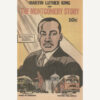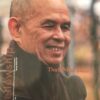March 15 is widely used as the date on which the conflict in Syria began. March 15, 2011 was the first “Day of Rage” held in a good number of localities to mark opposition to the repression of youth in the southern city of Daraa, where a month earlier young people had painted anti-government graffiti on some of the walls, followed by massive arrests.
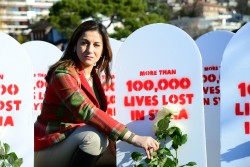
This year, the conflict’s fifth anniversary takes place as negotiations among some of the parties have started in Geneva. A cease-fire started at the end of February seems to be holding. The cease-fire does not cover areas held by the Islamic State (ISIS) and the Salafist group Jabhat al Nurra. The Russian Federation has started to withdraw some of its troops but said it would continue to bomb opposition targets. It is too early to see what the impact of the Russian actions will be. The situation merits watching closely.
More directly related to FOR concerns, I think that it is important for us to look at why organizations that promote nonviolent action in the U.S. and Western Europe were not able to do more to aid those in Syria who tried to use nonviolence during the first months of 2011.

By June 2011, the conflict had largely become one of armed groups against the government forces, but there were at least four months when there were nonviolent efforts before many started to think that a military “solution” was the only way forward. There were some parts of the country where nonviolent actions continued for a longer period.
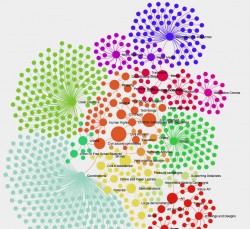
There had been an effort early-on from some Syrians to develop support among nonviolence groups, including FOR, in the United States. A number of blogs with photos of nonviolent actions were presented on the FOR website. The Syrian Nonviolence Movement, led by Syrians, launched a Facebook page and created a map of nonviolent actions.
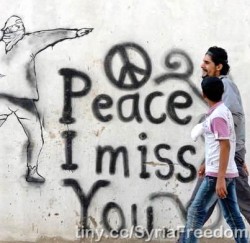
The web presentations, which continue, were very uneven. There lacked information on the causes of the struggle. Such information was needed for non-Syrian readers. There was little information as to what a reader could do beyond signing a petition to Syria and the UN concerning political prisoners.
As Syrian dissident Yassin Al-Haq Saleh wrote concerning the “Left” in the US and Europe, but would also be true for nonviolent activists:
I am afraid that it is too late for the leftists in the West to express any solidarity with the Syrians in their extremely hard struggle. What I always found astonishing in this regard is that mainstream Western leftists know almost nothing about Syria, its society, its regime, its people, its political economy, its contemporary history. Rarely have I found a useful piece of information or a genuinely creative idea in their analyses.
However, the reverse is also true. Syrian exiles often do not understand Western culture. Cooperation in how to present ideas in a U.S. milieu would have been useful.
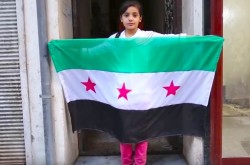
I will give a personal example. I have been highlighting in the UN human rights bodies the fate of minority religious groups that are not part of a wider religious body. My efforts began with the Mandaeans of Iraq shortly after the US occupation. The Mandaeans, for complicated reasons, were considered too favorable to Saddam Hussein, and there were revenge actions taken against them. Most of the Iraqi Mandaeans left Iraq for Syria (frying pan into the fire), and are having difficulties there. However, they cannot or do not want to return to Iraq.
More recently, I have been active on the fate of the Yazidi (also written as Yezidi), a Kurdish-speaking religious group of some 600,000 people largely located in areas under the control of the Islamic State. ISIS has taken over an already-existing view that the Yazidi were “devil worshipers” and should be destroyed. Some Yazidi women have been sold as sex slaves, and Yazidi religious leaders have been killed. It is a situation for which I use the term “genocide.” If the religious leaders are killed, there is a real danger that the religion will be abolished. One must be born into the faith. There are no conversions allowed, and only the current religious leaders know the doctrine and the rituals. Against the danger of destruction, some Yazidi exiles in the United States created a website about their plight.
The Yazidi have taken over the Gnostic belief that the material world was created not by the High God who deals only with Spirit but by lesser divinities who are less good and deal with creating matter. This idea is set out on the website with images of the peacock which either represents the lesser gods or are the angels, the first creations of the lesser gods. The theology is not always clear. Although back in the late 1950s I was a student of the historian of religions Mircea Eliade at the University of Chicago, I have a hard time understanding the presentations of the cosmogonic myth — a narrative account of the creation and of primordial beginnings. (See one of his best known books, The Sacred and the Profane: The Nature of Religion.)
A somewhat simplified presentation could have been made with the help of non-Yazidi without undercutting the complexity of the religion. The Pope and the Vatican have found it possible to come to support the Christians of Syria most of whom are monophysites although each line of the Catholic credo is a direct opposition to monophysic beliefs.
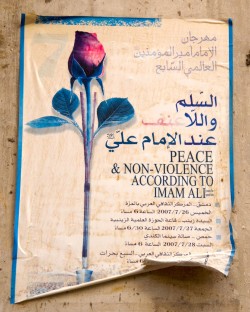
The Syrian situation has grown increasingly complex since 2011, with more actors involved and with a larger number of refugees and displaced persons. Thus we need to look at why U.S. and European nonviolent advocates were not able to do more.
The executive director of the Syrian Nonviolence Movement, Ibrahim Al-Assil, wrote on this site two years ago about continuing creative nonviolence. In Syrian areas where the cease-fire is effective, there are again unarmed protests.
We need to see what the possibilities are for cooperation on nonviolent actions today.




